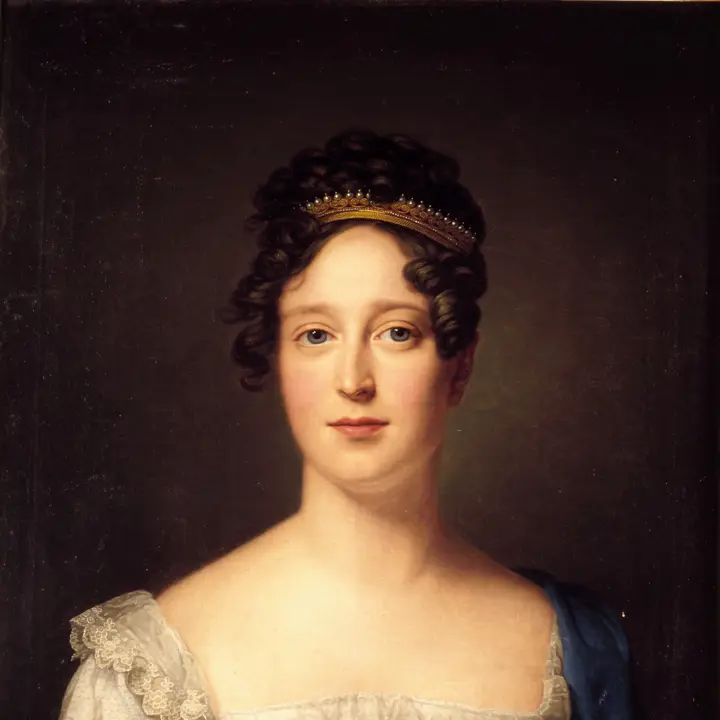
Caroline Amalie
The set was created in its current form in 1842 at the behest of Queen Caroline Amalie.
The rubies and large pearls are the oldest pieces in the crown jewels.
The history of the pearl-ruby set
In its current form, the set was created in 1842 for Queen Caroline Amalie by the jewellery firm C.M. Weishaupt & Söhne in Hanau, Hessen. The short pearl necklace was extended with eight small pearls, and the white pearls were combined with the deep red rubies. The result was a jewellery set in the style of the time, Rococo Revival, in colours that refer to the red-and-white Danish flag.
A new diamond cut
The brooch and the earrings feature rubies, pearls and brilliant-cut diamonds. Caroline Amalie provided the 17 rubies, which originally came from Christian VI’s sister Princess Charlotte Amalie. The deep red rubies add an intense glow, while the brilliant-cut diamonds catch and reflect the light to dazzling effect. The combination of these precious stones creates a visual masterpiece, where the delicate beauty of the pearls and the dazzling glow of the rubies form a perfect harmony.
The large pearls in the necklace can be dated to the late 17th century for certain but may be even older.
This suggests the necklace had long been part of the Danish royal family's possessions before the crown jewels collection was established.
The brooch can be disassembled and used in several ways.
The pearl necklace is one of the oldest pieces in the crown jewels. The large pearls in the necklace can be traced back to the late 17th century with certainty – perhaps even further back, since pearls of this size and regularity are very rare .